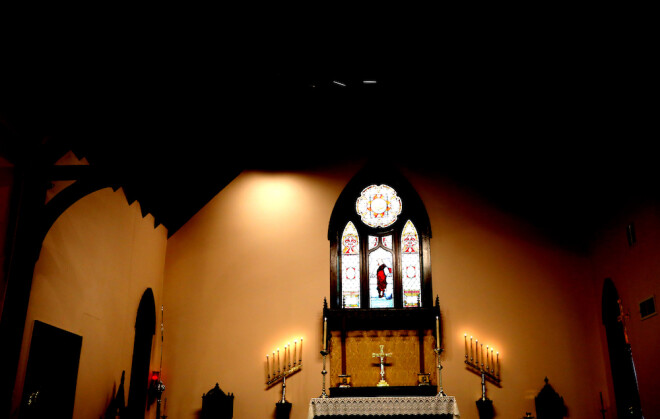The Way of Beauty

Let us start with the idea of uselessness. Think of the things that are, strictly speaking, useless, and yet of great importance in your life. Having a leisurely dinner with friends, looking at a sunset or a painting, celebrating the victory of your team: these are not means to an end, but rather moments to be enjoyed. Now, one might respond that they could prove useful: that friend might become a client, that painting might be bought as an asset, and winning might lower one’s blood pressure! But these are beside the point: the activities themselves are useless, and as such we sense that they tell us something about who we really are. Of course, the One who is “worthwhile” in and of Himself is God, whom, St. Augustine said, is only to be enjoyed and never used. (Using God goes under such names as “idolatry” and “works righteousness,” about which we will have more to say later).
Sometimes people say that their form of worship is standing on a mountain top watching a sunset. There is something true in this, for worship does involve the beautiful -- as well as the good and the true, which together are called in philosophy the “transcendentals”. Beauty implies coherence and perfection; it makes the object stand out, to shine. All these can in some partial way point us on to the One who is “beautiful in holiness,” who stands out in such brightness as to make creation tremble (Isaiah6). In other words, the experience of beauty suggests worship to our hearts, not least because for a moment we forget ourselves. Who would be the One before whom we fully forget ourselves and to whom we completely offer ourselves? It is no accident that Revelation4-5 and 21 offer beautiful pictures of our eternal and worshipful destiny with God that are replete with light and song. That mountain sunset is important, but it is just the beginning… .
John Paul II, Letter to Artists
Every genuine artistic intuition goes beyond what the senses perceive and, reaching beneath reality's surface, strives to interpret its hidden mystery. The intuition itself springs from the depths of the human soul, where the desire to give meaning to one's own life is joined by the fleeting vision of beauty and of the mysterious unity of things. All artists experience the unbridgeable gap which lies between the work of their hands, however successful it may be, and the dazzling perfection of the beauty glimpsed in the ardour of the creative moment: what they manage to express in their painting, their sculpting, their creating is no more than a glimmer of the splendor which flared for a moment before the eyes of their spirit.
Believers find nothing strange in this: they know that they have had a momentary glimpse of the abyss of light which has its original wellspring in God. Is it in any way surprising that this leaves the spirit overwhelmed as it were, so that it can only stammer in reply? True artists above all are ready to acknowledge their limits and to make their own the words of the Apostle Paul, according to whom “God does not dwell in shrines made by human hands” so that “we ought not to think that the Deity is like gold or silver or stone, a representation by human art and imagination” (Acts 17:24, 29). If the intimate reality of things is always “beyond” the powers of human perception, how much more so is God in the depths of his unfathomable mystery!
Metropolitan Kallistos Ware
All God made is good; that the whole world is a sacrament of divine presence. Through material things we can worship God and learn about Him. Heaven and earth are full of Thy glory!
God is present in the icons and also in the Eucharist, but the manner of His presence is different.
Icons safeguard our faith in the fullness of the Incarnation, our faith in the creativity of the human person made according to God’s image, our faith in the intrinsic holiness of all material things. God is good – He is Goodness itself. God is true – He is Truth itself. God is beautiful – He is Beauty itself”. Holy icons underline divine beauty. Beauty is attractive and draws us to itself. Beauty calls to us and draws us to itself. Icons show the attractiveness of God. They are our door to eternity. Icons help us understand the very Glory of God!



